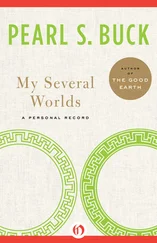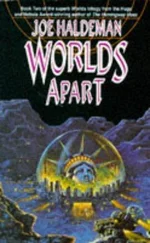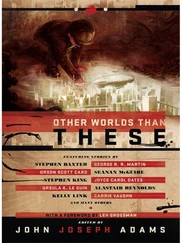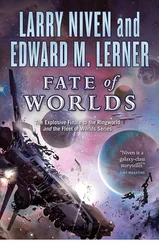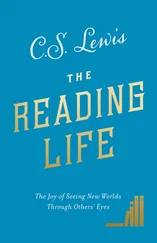A. Attanasio - In Other Worlds
Здесь есть возможность читать онлайн «A. Attanasio - In Other Worlds» весь текст электронной книги совершенно бесплатно (целиком полную версию без сокращений). В некоторых случаях можно слушать аудио, скачать через торрент в формате fb2 и присутствует краткое содержание. Жанр: Фэнтези, на английском языке. Описание произведения, (предисловие) а так же отзывы посетителей доступны на портале библиотеки ЛибКат.
- Название:In Other Worlds
- Автор:
- Жанр:
- Год:неизвестен
- ISBN:нет данных
- Рейтинг книги:3 / 5. Голосов: 1
-
Избранное:Добавить в избранное
- Отзывы:
-
Ваша оценка:
- 60
- 1
- 2
- 3
- 4
- 5
In Other Worlds: краткое содержание, описание и аннотация
Предлагаем к чтению аннотацию, описание, краткое содержание или предисловие (зависит от того, что написал сам автор книги «In Other Worlds»). Если вы не нашли необходимую информацию о книге — напишите в комментариях, мы постараемся отыскать её.
In Other Worlds — читать онлайн бесплатно полную книгу (весь текст) целиком
Ниже представлен текст книги, разбитый по страницам. Система сохранения места последней прочитанной страницы, позволяет с удобством читать онлайн бесплатно книгу «In Other Worlds», без необходимости каждый раз заново искать на чём Вы остановились. Поставьте закладку, и сможете в любой момент перейти на страницу, на которой закончили чтение.
Интервал:
Закладка:
Caitlin and Sheelagh came by late in the afternoon
to see the mess themselves, and they found Zee still there.
"What do you think happened?" Caitlin asked after she had surveyed a blasted room.
Zee was sittin on the couch in the living area where he could see to the bathroom, staring as though he had not heard h r. He tugged at his beard, twisting at the braid that had formed from his daylong tugging. "Spontaneous human combustion," he whispered without looking at her.
"What?" The old woman looked to her daughter, who just shook her tear-streaked face.
"No one knows why," Zee answered in a trance, "but it happens all the time-usually to old ladies who drink too much."
Caitlin gave him a fierce, reproving look.
"I'm not joking," he shot back. ."That's the statistic. Men burn up, too. And I guess that's what's happened to Carl."
"You mean, he just caught fire?" Caitlin sat down beside him and peered into his face incredulously. "How can that be?"
"I don't know. Nobody, knows. I read about it once. The best theory they have is that imbibed alcohol ignites some kind of chemical reaction in the body."
"But Carl never drinks," Sheelagh pointed out, and then straightened with the rise of a memory. "The police came by the tavern. I told them he was feeling odd yesterday. Paper stuck to him and sparks kept jumping from his. fingers."
"Yeah, I remember that," Zee muttered. He stood up. He went back to the bathroom for another look at the mystery. He was a rational man, and he felt, muscularly felt, that there was a reason for this.
The blue, wide-sky fragrance was almost gone. Sunlight slanted through the apartment window and
laid a diagonal bar across the purpled bathroom mirror. In the brilliant yellow shaft, a shadow showed within the heat-varnish of the mirror.
"Hey!" he called to the two women. "Do you see this? Or am I losing my mind?"
Caitlin and Sheelagh entered the bathroom with trepid alertness and peered where Zee was pointing. In the violet-black sheen of the mirror, where the sunlight crawled, was the vaguest
shadow.
"It looks like a tree crown to me," Caitlin said.
"No-it's the outline of a head, neck, and shoulders," Zee insisted, his finger frantically outlining the image.
"Could be," Sheelagh conceded. "But it could also just be our imagination."
"I'm a science writer," Zee said impatiently, pressing his face to the mirror. "I don't have an imagination. Get me a screwdriver. Come on."
Zee dismantled the mirror and took it to his studio office in Union Square. For a while he experimented with it himself, illuminating the surface with sunlight, arc light, UV light. Nothing more than' the dimmest semblance of a human head appeared. And the rorschached shape could really have been anything. But Zee recognized the square of Carl's head, the familiar silhouette so oft-seen in the darkness of lights-out at St. Tim's, too well remembered from those lonely first years when a friend was the closest he got to family. Hard as he tried, though, his amplifications distinguished little more than an amorphous shadow.
Then a friend of his who worked at IBM's imageintensification lab in Jersey took pity on his feeble but relentless efforts and decided to prove once and for all that the mirror was a random fire pattern. A week later, the friend, pastier and meeker-looking, presented him with a computer-enhanced photograph. The five-by
seven-inch unglossed image showed a starburst of puissant radiance, most of it blank with an unsealed intensity Daggered at the very center, a clot of darkness resolved with a stabbing clarity to Carl Schirmer's
horror-crazed features. Eating the Strange
Nothing-the blankest word in the language. A year ago, Carl Schirmer vanished into nothing. How? I've come to believe that the microevents in the atoms of Carl's body are the key. I'm not a physicist, but I know enough science to guess what happened to him. Here's what I figure:
The very big and the very small-general relativity and quantum mechanics-come together, at a fundamental unit of length called Planck's length, which is the geometrical mean of Compton's wavelength and Einstein's gravitational radius of a particle. It looks like this: 1= h
C3
It's equivalent to about 10'3 centimeter. The edge of nothingness, just beyond that smallness, spacetime
itself loses the flat, continuous shape we take for granted and
becomes a fantastic seething of wormholes and microbridges,
the tiniest webs and bubblings. Any part of this ceaseless
ferment lasts no more than the sheerest fraction of a –second.
It is the texture of Nothing. Like sponge. Or suds. Each
bubble is a solitary region of space: The surface of the bubble is
the farthest distance the center of the bubble can know about
in its brief lifespan because that's as far as light can travel in so
short a time. It's a universe in itself, existing only for that
fraction of time and during that fraction connecting our
universe with the ubiquitous Field that connects all universes.
To see how this fact connects with Carl Schirmer, we have to go back to Planck. At the end of the nineteenth century, he was trying to explain why radiation varies with temperature. As
an object is heated, first it gets red-hot, then white-hot. It only gets bluehot if the temperature increases. The higher frequencies of blue require more energy-which was news in the nineteenth century. Greater energy for shorter wavelengthsl Not what common sense had learned from sound and water waves, which need more energy the longer they are. The now classic formula that predicts this phenomenon is E = hF where h = Planck's constant:
Since frequency is the inverse of time, the formula can be written this way: E x T = Constant (h). Energy, as everybody knows, equals mc2, mass times the speed of light squared. What, after all, is the speed of light but a length of space covered in a period of time. So, h actually equals Mass times Length2/Time. ML2/T is called angular momentum.
What is it? Basically, it's linear momentum times the radius around which it spins, MIA x L = ML2/T, like a rock in a sling. The amazing thing is that this
angular momentum, alias Planck's constant, can hold any amount of energy at all! Like the skater who spins faster by pulling in his arms, the frequency of a photon increases as its radius, in this case wavelength, decreases. Fantastically, there is no limit to this increase of energy, either. The smaller the photon, the more energy it containsl
Somehow, Carl turned into light. And that light did not wholly irradiate away. If it had, a large part of Manhattan would have been vaporized. Instead, the photons that made up Carl increased in energy and shrank. The energy flux was so great that Carl's body of light shrank smaller than the fine structure of spacetime itself-and he fell through the fabric of our reality into the seething superspace of quantal-tunnels, spume, and foam-perhaps to expand again in another universe. This is the ghost hole theory. A saner phrase than Nothing. But really, it's just as senseless.
I'm writing a science fiction novel. Shards of Time. It's about Carl, of course, and the ghost hole that swallowed him. Just now it's seeming that's all there is between me anti insanity-this fabulous story of a man who turns into light, a man whose fate I'd always taken for granted. Why are stories so long? The text is already there, in the true history of accidents that brought Carl and me together and then separated us. If I can just write it before –my funds dry up, I may be able to sell it 'and not have to move. I don't want to move-: There's been enough erasure lately. I've barely the stamina left to imagine the lies that can carry the ideas coming at me. The moment goes everywhere at once. Unfortunately, the muscle of my memory is numb, and my line of concentration has been wavering. I must rest. Actually, I must restructure myself inside out. Perhaps I'll fast.
Читать дальше
Интервал:
Закладка:
Похожие книги на «In Other Worlds»
Представляем Вашему вниманию похожие книги на «In Other Worlds» списком для выбора. Мы отобрали схожую по названию и смыслу литературу в надежде предоставить читателям больше вариантов отыскать новые, интересные, ещё непрочитанные произведения.
Обсуждение, отзывы о книге «In Other Worlds» и просто собственные мнения читателей. Оставьте ваши комментарии, напишите, что Вы думаете о произведении, его смысле или главных героях. Укажите что конкретно понравилось, а что нет, и почему Вы так считаете.


